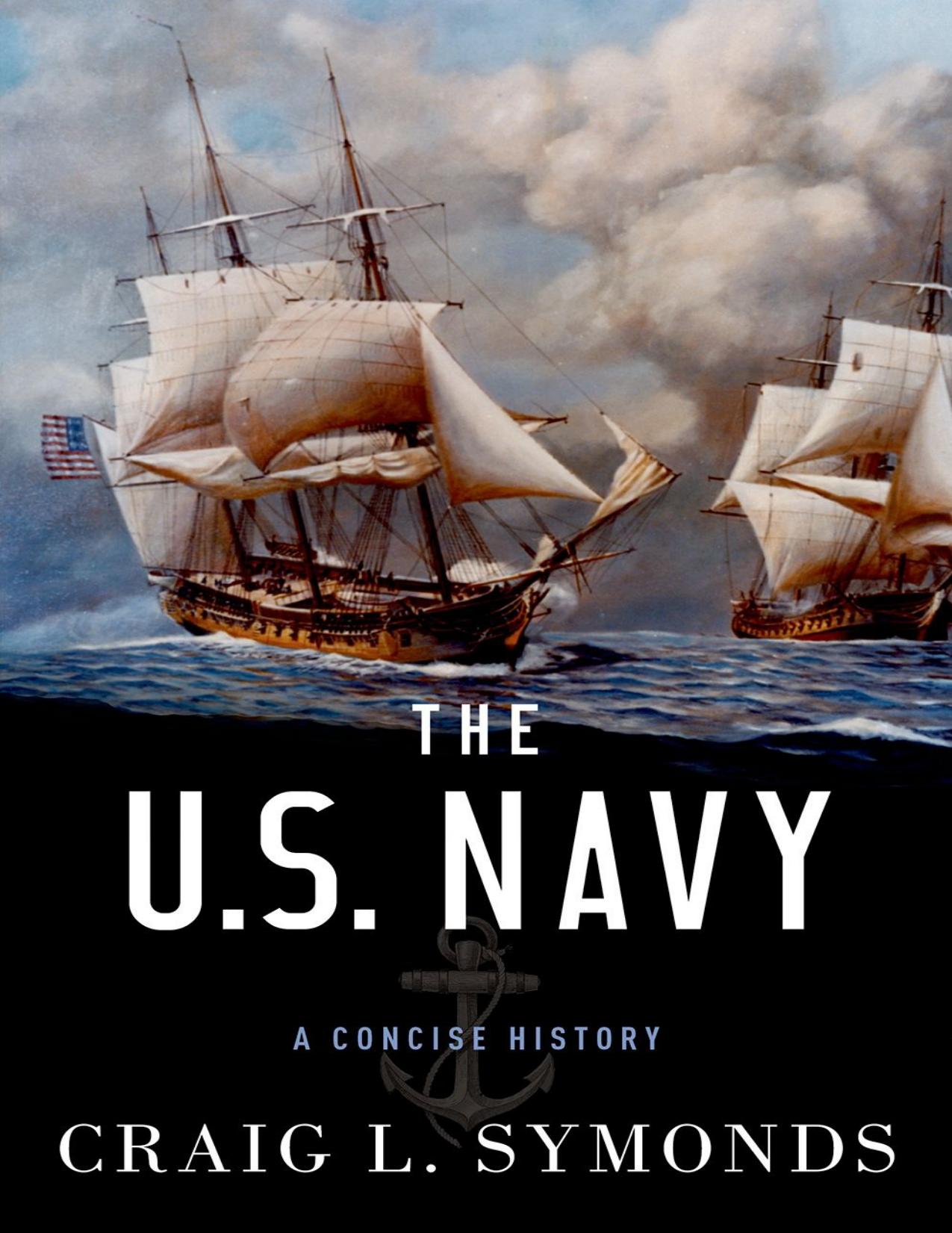The U.S. Navy by Craig L. Symonds

Author:Craig L. Symonds [Symonds, Craig L.]
Language: eng
Format: epub, pdf
ISBN: 9780199394944
Publisher: Oxford University Press
Published: 2015-09-28T00:00:00+00:00
The Great White Fleet
Mahan had postulated that battleships, especially battleships operating in a concentrated fleet, were the sine qua non of naval power. In 1902, the first year of Rooseveltâs presidency, the United States commissioned one new battleship, which was christened the Maine in honor of the one lost in Havana Harbor four years before. A year later the USS Missouri was commissioned. Then, between 1906 and 1908, no fewer than thirteen new battleships joined the fleet. After that there was no longer any doubt that the United States had decided to pursue the Mahanian prescription. Even as those new battleships put to sea, however, dramatic changes in ship design were redefining the index of naval power.
The biggest change concerned battleship armament. The USS New Hampshire, laid down in May 1905, boasted a main battery of four 12-inch guns plus a secondary battery of smaller guns. For some time ship designers and naval officers had observed that during the early stages of a naval engagement, when the ships were farthest apart, only the largest of their guns would be within range, which made a secondary battery largely irrelevant. When the USS South Carolina and USS Michigan were laid down in 1906, they each carried a much larger primary battery of eight 12-inch guns, twice as many as the New Hampshire. The South Carolina and Michigan were not completed, however, until 1910, and in the meantime Britain stole a nautical march on the United Statesâand on everyone elseâby hurriedly completing HMS Dreadnought in 1906. With ten 12-inch guns and only a small secondary battery, she could bring twice as many guns to bear in the early stages of a battle than any other ship then afloat. From 1906 onward all battleships, of every nation, were classified either as dreadnoughts or pre-dreadnoughts.
Another big change in battleship design during this era was the switch from coal to oil as fuel. Oil generated more power and made ships fasterâa critical advantage in battle. For the oil-rich United States this required simply reengineering the power plant. For the British, however, it was a much more serious transition, for while Britain had lots of coal, it possessed almost no domestic oil, which made Britain newly dependent on overseas oil. Britain âsolvedâ this problem by creating the Anglo-Persian Oil Company, though it was a decision that carried the seeds of future complications in the Middle East. The result of these developments was that the modified yardstick of naval power was now the number of oil-burning dreadnoughts a nation possessed.
Elected in his own right in 1904, Roosevelt was eager to test the capabilities of the new, though already superseded, U.S. battleships. To do that he decided to dispatch sixteen of them on a round-the-world cruise. Because all the ships were painted peacetime white, their ensuing circumnavigation has ever since been known as the cruise of the âGreat White Fleet.â Officially, at least, the purpose of the cruise was to test the shipsâ capability on long voyages, though Roosevelt also expected significant political and diplomatic benefits.
Download
This site does not store any files on its server. We only index and link to content provided by other sites. Please contact the content providers to delete copyright contents if any and email us, we'll remove relevant links or contents immediately.
Kathy Andrews Collection by Kathy Andrews(10517)
The remains of the day by Kazuo Ishiguro(7550)
Spare by Prince Harry The Duke of Sussex(4195)
Paper Towns by Green John(4169)
The Body: A Guide for Occupants by Bill Bryson(3797)
Be in a Treehouse by Pete Nelson(3211)
Harry Potter and the Goblet Of Fire by J.K. Rowling(3040)
Goodbye Paradise(2957)
Never by Ken Follett(2878)
Into Thin Air by Jon Krakauer(2699)
The Remains of the Day by Kazuo Ishiguro(2617)
The Genius of Japanese Carpentry by Azby Brown(2608)
The Cellar by Natasha Preston(2594)
Drawing Shortcuts: Developing Quick Drawing Skills Using Today's Technology by Leggitt Jim(2532)
120 Days of Sodom by Marquis de Sade(2434)
Architecture 101 by Nicole Bridge(2349)
The Man Who Died Twice by Richard Osman(2296)
Machine Learning at Scale with H2O by Gregory Keys | David Whiting(2283)
Fairy Tale by Stephen King(2062)
